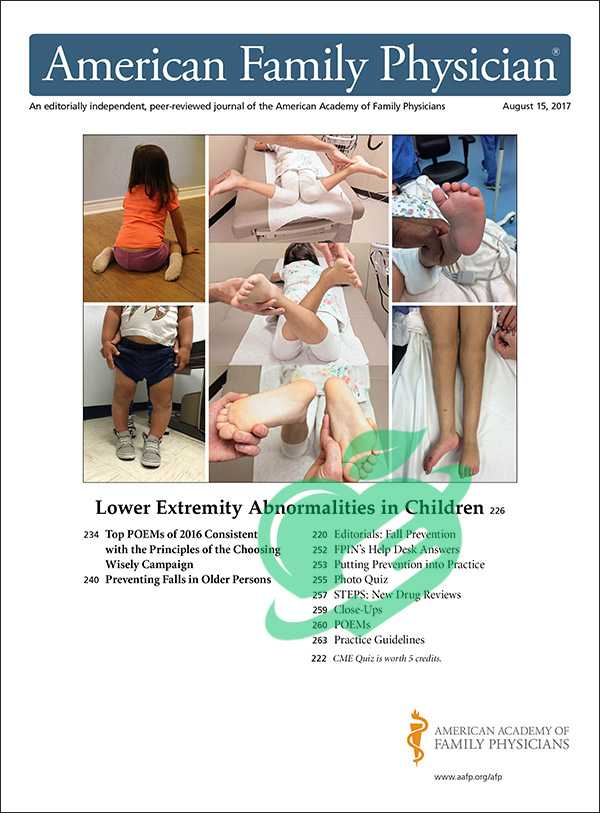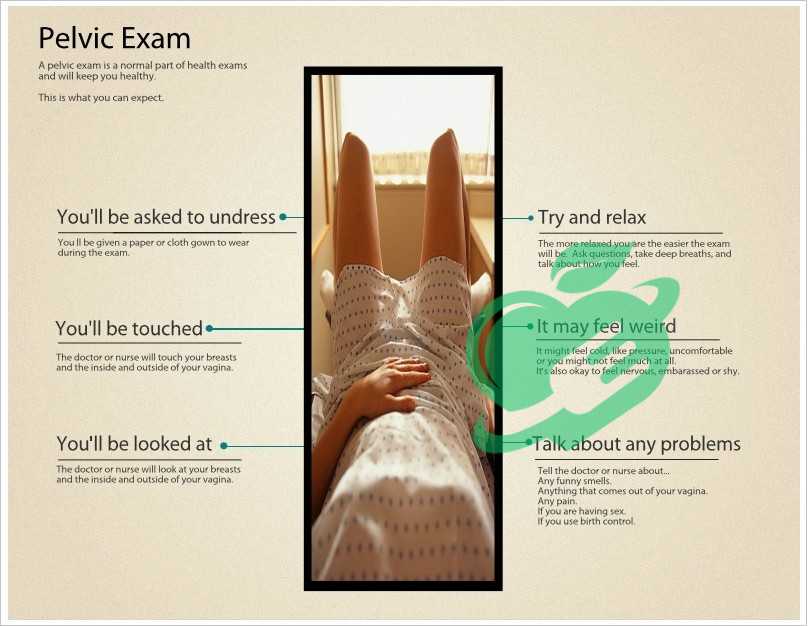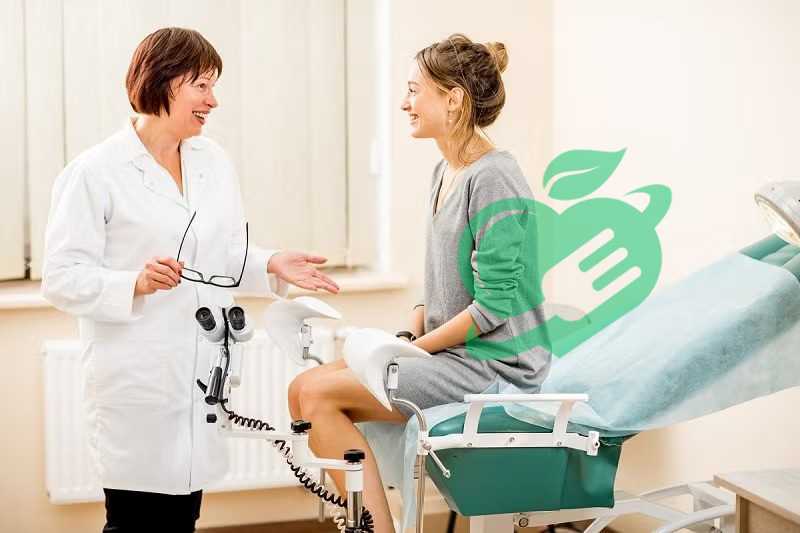The Pelvic Exam: What Every Woman Should Know

Definition of a Pelvic Exam
A pelvic exam is a crucial part of a woman’s routine healthcare that involves a comprehensive assessment of the female reproductive organs. This typically includes an examination of the vagina, cervix, uterus, ovaries, and fallopian tubes. During the procedure, the healthcare provider may also conduct a Pap smear to check for precancerous cells or infections. While the examination may seem daunting to some, it is designed to ensure that a woman’s reproductive health is being monitored effectively. The exam usually takes place in a private, comfortable setting, allowing for open communication between the patient and the healthcare provider.
Importance of Pelvic Exams for Women
The significance of regular pelvic exams cannot be overstated. Here are some reasons why they are essential for women’s health:
- Early Detection of Issues: Regular pelvic exams help in identifying early signs of conditions such as cervical cancer, sexually transmitted infections, or other reproductive health issues.
- Preventive Care: These exams serve as an opportunity for women to discuss their health concerns, undergo necessary screenings, and receive vaccinations, like the HPV vaccine.
- Empowerment: Knowledge is power. Regular visits empower women to take charge of their health by being informed about their bodies and any potential risks.
For many women, taking that step to schedule a pelvic exam can feel like a leap. However, it is an integral part of their healthcare routine that fosters a sense of connection to their health journey. Remember, each visit is a step toward a healthier future!

Preparation for a Pelvic Exam
Before the Exam
Preparing for your pelvic exam can significantly reduce anxiety and ensure that the experience is as smooth as possible. Here are some helpful tips to consider:
- Schedule Wisely: It’s best to book your exam during a time when you’re not menstruating. Ideally, avoid scheduling it during your menstrual cycle, as this may affect the examination results.
- Gather Questions: Think about any concerns or questions you wish to address with your healthcare provider. Writing them down can help ensure you don’t forget anything during the appointment.
- Limit Intimate Activities: It’s recommended to refrain from sexual intercourse, douching, or using tampons for 24 to 48 hours before your exam. This allows for a clear assessment of your reproductive health.
Remember, the more prepared you are, the more comfortable your experience will be.
What to Expect During the Exam
As you step into the office, it’s common to feel a mix of nerves and anticipation. During the exam, here’s what generally happens:
- Discussion: Your healthcare provider will likely start with a conversation about your medical history, any symptoms you may be experiencing, and your overall health.
- Physical Examination: You’ll be asked to change into a gown and lie on an examination table. The provider will perform the pelvic exam, using a speculum to gently open the vagina and inspect the cervix and vaginal walls.
- Pap Smear (if necessary): If it’s part of your screening, the provider will collect cells from your cervix for testing.
- Breast and Abdominal Exam: In some cases, the provider may also examine your abdomen and perform a breast examination to check for any abnormalities.
Knowing what to expect can help dispel some of the nervousness surrounding a pelvic exam. Your provider is there to ensure your comfort and well-being throughout the process.

The Procedure of a Pelvic Exam
Understanding the step-by-step procedure of a pelvic exam can help demystify the experience, making it feel less intimidating. Here’s a breakdown of what typically happens during the exam:
- Arrival and Preparation: Upon arriving at the clinic, you will check-in and may be asked to complete a health history form. This is a crucial step to help your provider understand your health background.
- Changing into a Gown: You’ll be instructed to change into a gown and lie on an examination table, with your feet in stirrups, allowing for ease of access for the healthcare provider.
- Visual Inspection: The provider will begin with a visual examination of the external genitalia, looking for any abnormalities such as lesions or unusual discharge.
- Speculum Insertion: A speculum, a device designed to hold the vaginal walls apart, will be gently inserted. This allows the provider to view your cervix and collect necessary samples for a Pap smear if required.
- Bimanual Examination: After removing the speculum, the provider will perform a bimanual examination. This involves using two fingers to feel the ovaries and uterus through the abdominal wall, checking for any irregularities.
- Concluding the Exam: Afterward, the provider will explain any findings and discuss the next steps, including recommendations for follow-up or additional tests if needed.
Common Questions and Concerns Addressed
It’s natural to have questions or concerns about a pelvic exam. Here are common queries many women ask:
- Is it painful? Most women feel some pressure but minimal pain. If discomfort arises, communicate with your provider.
- How long does it last? The exam typically takes around 10 to 15 minutes, though discussions may extend the time.
- What if I’m embarrassed? Remember, healthcare providers are professionals who encounter these visits daily. They are focused on your health, not judgment.
Addressing these concerns can ease any anxiety you may have about the process, encouraging you to prioritize your health with confidence.
Rea also: Weight Lifting Women: Lift Heavy, Look Amazing

Detecting Early Signs of Disease
Regular pelvic exams are essential for women’s health, primarily because they help in detecting early signs of disease. During these exams, healthcare providers can identify potential issues before they escalate. Here are some key benefits:
- Cervical Cancer Screening: One of the most significant aspects of a pelvic exam is the Pap smear, which screens for cervical cancer. Early detection increases the chances of successful treatment.
- Identifying Infections: Providers can quickly identify sexually transmitted infections (STIs) or other reproductive system infections. Early treatment means better health outcomes and prevents the spread to others.
- Assessing Reproductive Health: Regular exams allow healthcare providers to monitor changes in the reproductive system, such as ovarian cysts or fibroids. Timely intervention can prevent complications later on.
For example, a friend of mine hesitated to schedule her pelvic exam due to embarrassment. However, when she finally went, they discovered a mild infection that would have worsened if left untreated. Her proactive decision saved her health.
Empowerment Through Knowledge
Understanding one’s body and health empowers women in their healthcare journey. Regular pelvic exams provide valuable insights that foster knowledge. Consider these points:
- Informed Decisions: Knowledge gained from exams enables women to make informed decisions regarding their health, such as contraception options or lifestyle changes.
- Building a Relationship with Providers: Regular visits help establish a trusting relationship with healthcare providers. Open communication makes it easier to discuss changes or concerns over time.
- Encouraging Healthy Habits: Awareness of reproductive health can motivate women to adopt healthy habits, such as regular exercise, nutrition, and stress management.
Overall, being proactive about pelvic exams not only aids in early detection but also empowers women, giving them the confidence to manage and prioritize their health effectively.

Pelvic Exam Guidelines and Recommendations
Understanding how often to schedule pelvic exams is crucial for maintaining optimal reproductive health. The frequency of these exams can depend on various factors, including age, medical history, and personal health concerns. Here’s a general guideline:
- Annual Exams: Many healthcare providers recommend that women start having pelvic exams annually from the age of 21. This even applies to those who are sexually active.
- Every Three Years: After the first Pap smear at age 21, if results are normal, women aged 21-29 may only need a Pap test every three years.
- 25 to 65 Age Range: Between ages 30 and 65, women can opt for a Pap smear combined with HPV testing every five years, provided the results are normal. However, those who have had abnormal results or certain risk factors may require more frequent exams.
For instance, a colleague of mine relied on her annual check-ups to keep track of her reproductive health and caught a potential issue early because of it.
When to Start and When to Stop
Knowing when to commence and end these exams is equally vital. Here’s what to consider:
- Start at Age 21: The general recommendation is to start pelvic exams at age 21, regardless of sexual activity. This helps establish a baseline for reproductive health.
- Consider Individual Factors: Women with specific risk factors—like a family history of reproductive cancers, early onset of sexual activity, or repeated infections—may require earlier or more frequent exams.
- Stop Around 65-70: Women who have had consistent negative Pap test results and no significant risk factors may consider stopping pelvic exams around age 65-70. However, this decision should always be discussed with a healthcare provider.
Ultimately, being active in these health guidelines ensures you’re taking the steps necessary to safeguard your reproductive health throughout different life stages. Regular communication with a healthcare provider is key to personalizing these recommendations.
Read also: Understanding the Importance of Mental Health First Aid.

Comfort and Communication During a Pelvic Exam
A pelvic exam can be a nerve-wracking experience for many women, but creating a comfortable environment can significantly alleviate anxiety. Here are a few ways healthcare providers can foster a more welcoming atmosphere:
- Private Spaces: A clean, private, and well-lit examination room can help women feel safe and secure. Many clinics have decor designed to be calming, which can make a big difference in setting the mood.
- Transparent Communication: Providers should explain each step of the exam beforehand. Knowing what to expect can help demystify the process. For instance, saying, “I’m going to insert a speculum now; you may feel some pressure,” can help a patient mentally prepare.
- Openness to Questions: Creating an approachable environment where women feel comfortable asking questions encourages better communication and trust.
My friend recalls her first experience when the provider took the time to explain every step, from the visual inspection to the bimanual exam. This transparency made her feel more at ease, and she appreciated the chance to understand what was happening.
Discussing Any Discomfort or Issues
Open communication about discomfort or health concerns during a pelvic exam is critical for patient-centered care. Here’s how to facilitate this discussion:
- Encouraging Feedback: Healthcare providers should always encourage patients to share any discomfort they may feel during the exam. Women should feel empowered to say, “Can we pause for a moment?” or “This feels uncomfortable.”
- Discussing Health Concerns: Before the exam, clinicians should ask if there are specific issues women wish to address, such as painful periods or unusual discharge. This dialogue can lead to a more personalized care experience.
- Mutual Understanding: Both women and providers need to acknowledge that discomfort can be a normal part of the process, but addressing it is vital for ensuring a healthy and positive experience.
By fostering a supportive environment and maintaining open lines of communication, healthcare providers can help women feel more comfortable during pelvic exams, encouraging them to prioritize their reproductive health without hesitation.
Read also: Life After Open Heart Surgery: Tips for a Smooth Recovery.

Pelvic Exam Risks and Red Flags
While pelvic exams are generally safe and important for maintaining women’s health, it’s essential to be aware of potential risks and complications. Here are some considerations:
- Infection: There is a very small risk that bacteria could be introduced during the exam, which could lead to a vaginal or pelvic infection. Women with a history of recurrent infections should communicate this to their healthcare provider beforehand.
- Discomfort or Pain: Some women may experience discomfort during the exam, especially if they are tense or anxious. Providers should be informed if the pain is severe, as this can indicate an underlying issue.
- Injury: Although rare, there is a slight possibility of injury to the vaginal walls or cervix due to improper technique or a medical instrument. Again, this is uncommon, but being aware helps underscore the importance of choosing a qualified healthcare provider.
A family member of mine felt apprehensive before her pelvic exam but left feeling relieved and reassured after her provider took the time to explain each step. Open communication can make a world of difference.
Signs to look out for during a pelvic exam
Monitoring your health after a pelvic exam is crucial. Here are some warning signs to alert you to potential problems:
- Severe Pain: If you experience intense pain that persists after the exam, it could indicate an underlying issue that requires attention.
- Heavy Bleeding: While light spotting can be normal after a Pap smear, heavy bleeding or passing large clots should prompt a call to your healthcare provider.
- Fever or Chills: These symptoms may signal an infection and should be addressed promptly.
- Unusual Discharge: Any changes in vaginal discharge, such as increased volume, odor, or color, can be indicative of an infection or other conditions.
By being aware of these potential complications and red flags, women can better advocate for their health and seek timely care when necessary. Regular check-ups paired with vigilance can lead to a healthier and more informed experience.
Read also: 11 reasons that may cause infertility

Pelvic Exams and Women’s Health Advocacy
One of the most powerful aspects of women’s health advocacy is the ability to spread awareness and education about pelvic exams. Knowledge is key to empowering women to take charge of their health. Here are some ways to get involved:
- Educational Workshops: Hosting or attending workshops on female reproductive health can help demystify pelvic exams. Sharing information about the benefits and procedures can alleviate fears and encourage more women to prioritize their health.
- Online Resources: Utilizing social media platforms and websites to share educational content can reach a larger audience. Infographics, articles, and videos can break down complex topics into manageable information that is easily digestible.
A friend of mine organized a local seminar where healthcare professionals answered questions about reproductive health. It turned out to be eye-opening for many attendees, sparking conversations that had previously been avoided.
Breaking Stigmas and Myths
Pelvic exams often come with a multitude of stigmas and myths that can prevent women from seeking necessary healthcare. Here are some prevalent misconceptions, along with the truths that can help break the stigma:
- Myth: Pelvic exams are painful and unnecessary.
- Truth: While some discomfort may occur, pelvic exams are essential for the early detection of diseases. Most women find the procedure tolerable, especially when providers communicate openly.
- Myth: Only sexually active women need pelvic exams.
- Truth: All women should begin regular pelvic exams at age 21, regardless of sexual activity, due to the importance of early screenings.
- Myth: Talking about pelvic exams is embarrassing.
- Truth: Open conversations can normalize these exams and empower women to care for their reproductive health.
By busting these myths and encouraging open discussions, women can feel more comfortable scheduling pelvic exams and prioritizing their health. Advocacy creates a supportive community wherein women can confidently explore their health needs and encourage one another to seek preventive care.
Read also: Empower Your Health: Recognizing and Addressing 8 Triggers of Vaginal Pain.

Frequently asked questions
What are the 4 parts of a pelvic exam?
- External visual examination. Initially, your doctor will probably examine your vulva for any unusual indications.
- Internal visual examination. Following this, your doctor will probably use a speculum, which is a tool made of plastic or metal with hinges, to gently open the walls of the vagina.
- Pap test.
- Physical exam . 1.
Is a pelvic exam painful?
Although many women experience some pressure and mild discomfort during speculum exams, severe pain is not typical and may suggest a problem with your pelvic floor. 2
Is a pelvic exam the same as a pap smear?
Is a pelvic exam identical to a Pap smear? No, they are not the same, but your healthcare provider can perform both a Pap test and a pelvic exam during the same visit. A pelvic exam serves as a physical assessment of your pelvic organs, whereas a Pap smear is a specific test conducted to check for cancer. 3
Recap of Key Points
As we wrap up this exploration of pelvic exams, let’s revisit some of the crucial points covered. Understanding the importance of pelvic exams is vital for every woman’s health:
- Regular Check-Ups: Starting pelvic exams at age 21 and continuing them as recommended is essential for early detection of potential issues, such as cervical cancer and infections.
- Preparation Matters: Knowing how to prepare for an exam and what to expect can greatly reduce anxiety and promote a smoother experience.
- Comfort and Communication: Creating a comfortable environment and fostering open communication with healthcare providers helps ensure that women feel empowered to express concerns during their appointments.
- Awareness and Advocacy: Spreading awareness about the importance of pelvic exams and breaking stigmas can lead to more women prioritizing their health.
A personal encounter with a colleague who bravely shared her positive experience after a pelvic exam made it clear how important it is to discuss these topics and advocate for regular check-ups.
Encouragement for Women’s Health Prioritization
Remember, prioritizing your health is not just an obligation; it’s an act of self-love. Taking the time to schedule regular pelvic exams can ultimately be a life-saving decision.
- Be Proactive: Don’t wait until something feels wrong. Schedule your exams regularly, ask questions, and advocate for your health.
- Educate Others: Use your voice to encourage friends, family, and colleagues to understand and participate in pelvic health.
- Embrace Your Body: Celebrate the incredible strength and resilience of your body. Taking care of it is key to a healthier and happier life.
By actively participating in your health journey and encouraging those around you to do the same, you help foster a culture of health awareness and empowerment. Let’s work together to ensure no woman feels alone in her health journey because together, we can prioritize women’s health!
Follow us for more updates and breaking news, as we provide you with everything new.
- mayoclinic ((↩))
- ochsner ((↩))
- clevelandclinic ((↩))




One Comment